On November 22 and 23, an in-person workshop on Situated Analytics took place at the University of Konstanz. The workshop organizers Tiare Feuchtner, Harald Reiterer, and Falk Schreiber invited Dieter Schmalstieg and Philipp Fleck from TU Graz as keynote speakers to talk in detail about Situated Analytics and present their own toolkit. The workshop was well attended by 22 researchers from Aarhus University, TU Graz, University of Konstanz, and University of Stuttgart.
Harald Reiterer kicked-off the workshop by introducing the general theme, the overall agenda, and the invited speakers to the audience. This was followed by an inspiring keynote on Situated Analytics by Dieter Schmalstieg, which was additionally live-streamed for interested remote SFB researchers.
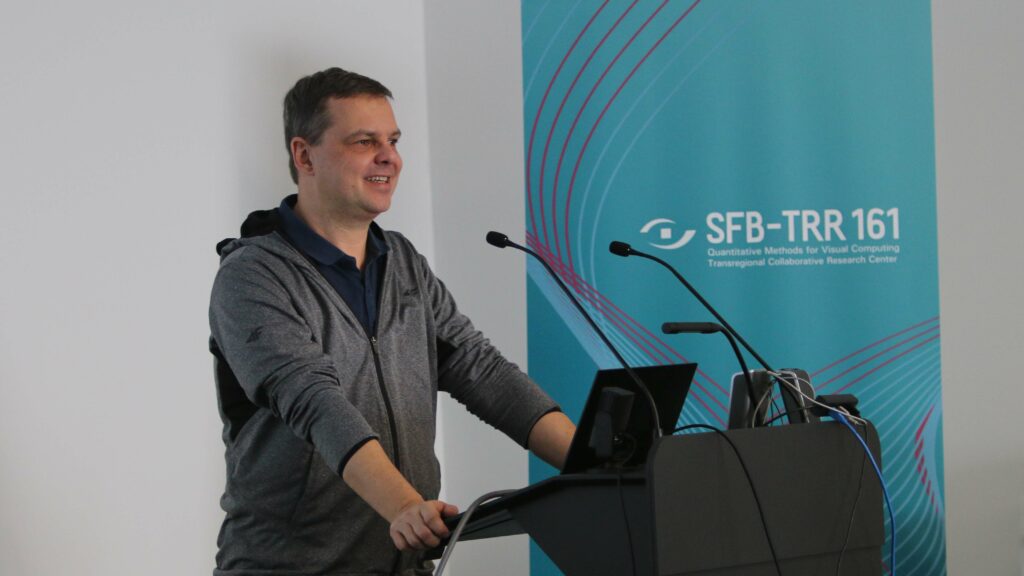
As part of the keynote, Dieter Schmalstieg distinguished Immersive Analytics and Situated Analytics: Unlike immersive visualizations, which can make use of the infinite space afforded by Virtual Reality environments, Situated Visualizations are grounded in the physical environment and, therefore, implemented in Augmented Reality (AR). With a mobile AR display (e.g., head-mounted or handheld), users are freed from having to bring the data to a workplace and, instead, may go where the data actually belongs (represented as so-called referents). This leads to Situated Analytics, which is analytic work supported by Situated Visualizations. Situated Analytics near physical referents is particularly relevant if referents themselves actively provide data (e.g., Internet of Things).
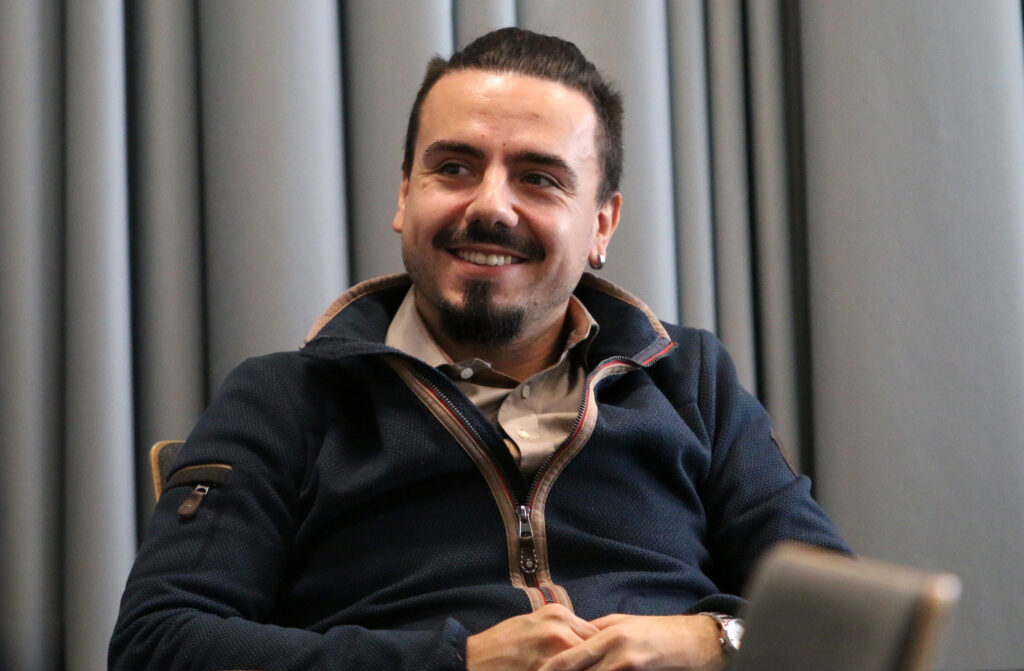
Philipp Fleck from TU Graz
Despite its promise to grant access to just the right data, anywhere and anytime, only few works explore Situated Analytics for extensive and complex tasks, such as visualization authoring or data exploration. To solve this problem, Philipp Fleck presented their self-developed toolkit for Situated Analytics, which facilitates the creation and exploration of situated analytics.
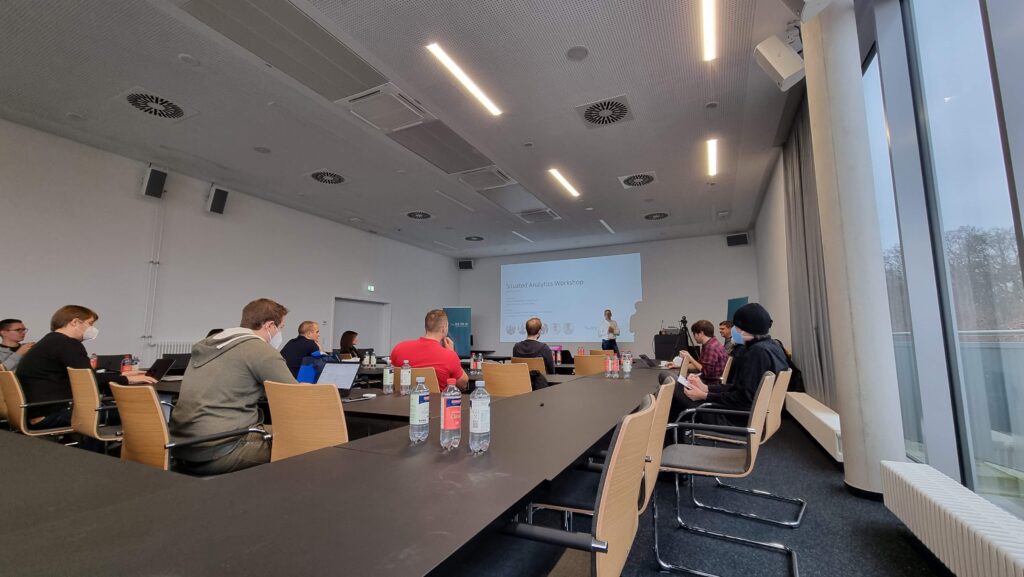
During the afternoon session of day 1, the workshop participants split up into three groups to attend a total of seven different demos from local labs and visiting workshop participants related to Situated Analytics (e.g., augmented and virtual reality experiences). The first day was concluded by a discussion on interesting topics and ideas that came up during the informative and interactive workshop parts, which was the foundation for the activities for day 2.
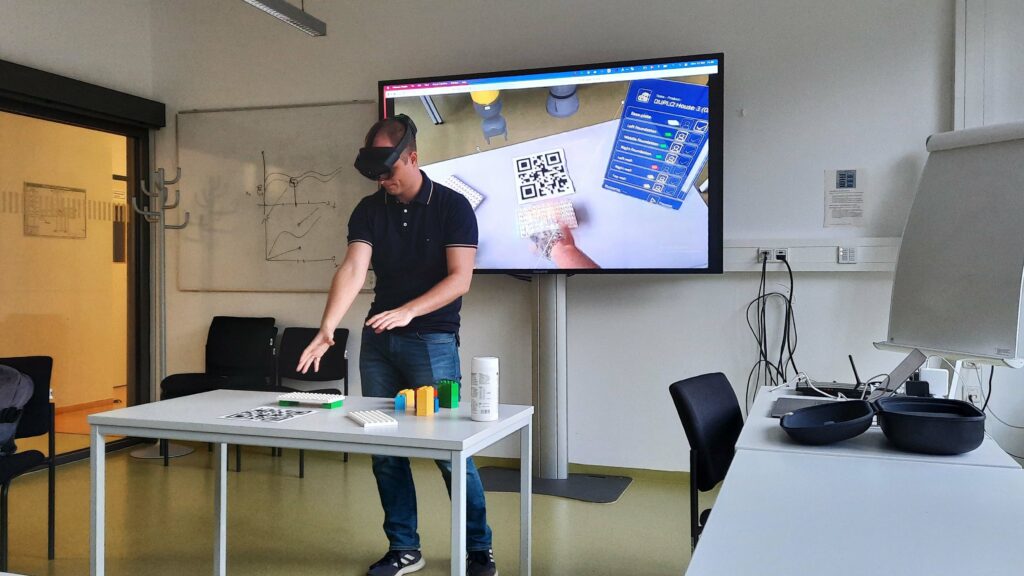
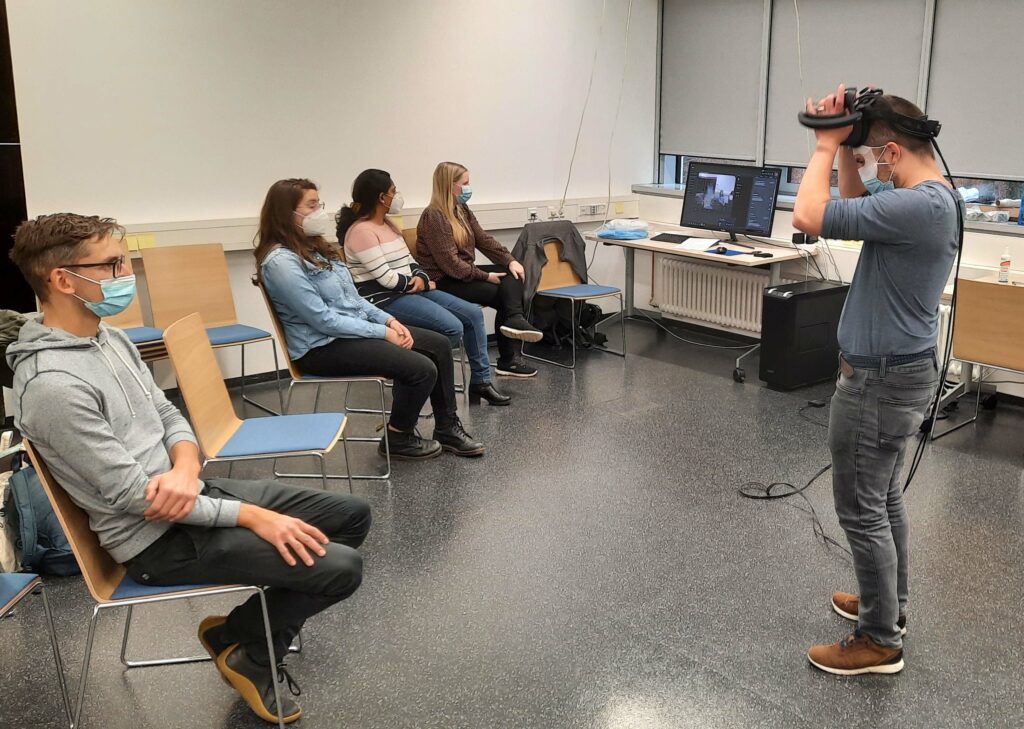
Experimenting, Photo: Michael Aichem 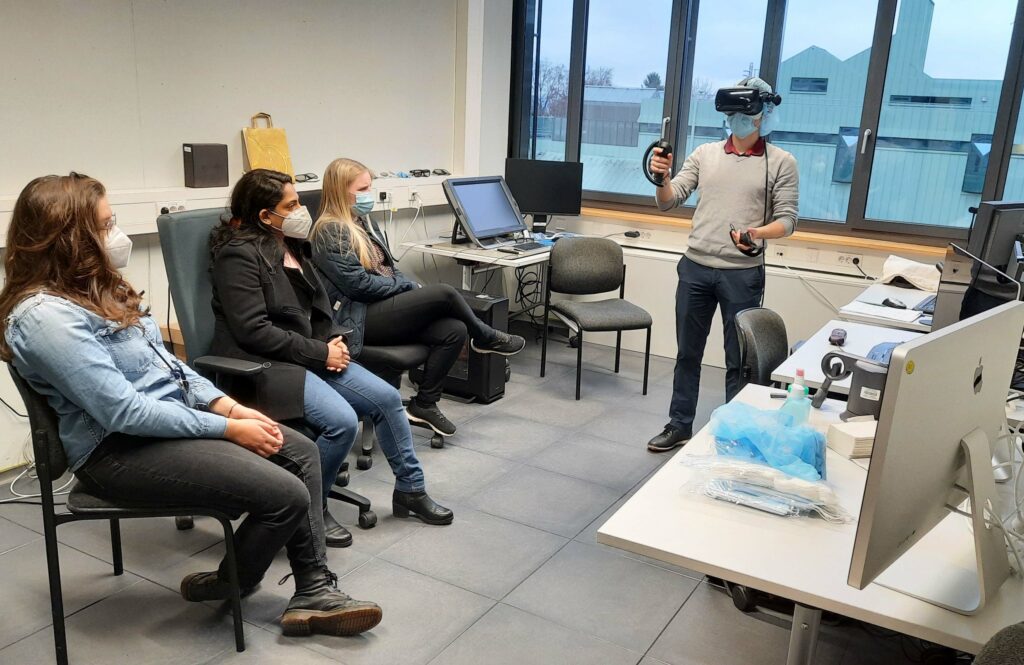
and Interacting, Photo: Michael Aichem
For the second day, participants split up again and worked in break-out groups on various topics and activities, including a hands-on tutorial with the presented Situated Analytics toolkit and brainstorming sessions covering individual and collaborative Situated Analytics scenarios. The outcome and results of these break-out groups were presented and discussed in the concluding session of the workshop in the afternoon.
All in all, a very productive workshop with interesting results during a time where all workshop participants were glad to meet in person. The many contributions and opportunities for networking and socializing have sparked new ideas or even started new collaborations, of which we will hopefully hear more during future SFB-TRR 161 events.


